Kangaroo Island fires: Inside KI Wildlife Park’s makeshift koala hospital
Thousands of native animals have perished in the Kangaroo Island bushfires, but a group of wildlife experts and volunteers are working around the clock to save as many they can.
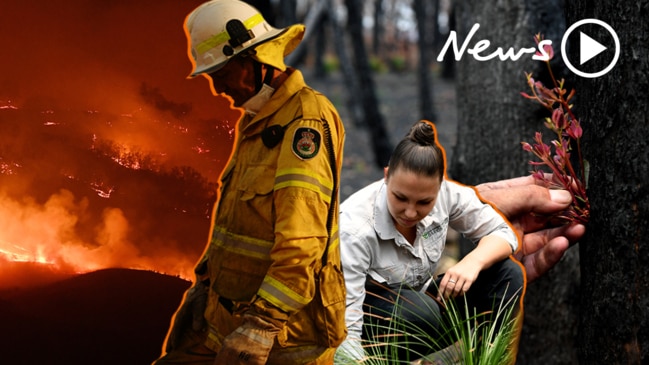
Bushfire Support
Don't miss out on the headlines from Bushfire Support. Followed categories will be added to My News.
- Animals front of mind as property goes up in flames
- Burnt or starving koalas – silent victims of the Cudlee Creek fires
- “Saving burnt baby koalas will stick with me forever”
It’s called Kangaroo Island, but it’s koalas which have captured the world’s imagination in the wake of devastating bushfires, which have destroyed most of their habitat.
Hordes of media crews from as far away as Europe and New York have flocked to the island to cover the fires which claimed thousands of native animals ranging from koalas and Kangaroos to rare glossy black cockatoos.
Experts have estimated that about 25,000 koalas perished.
Most of the media have made a beeline for Kangaroo Island Wildlife Park, just out of Parndana, where hundreds of burnt and starving koalas are being collected.

Owners Sam and Dana Mitchell say they now are now caring for 400 koalas, which are being housed in new cages rapidly erected with the help of army reserve soldiers on the island as part of Operation Bushfire Assist.
Firefighters, locals and other bushfire recovery volunteers who come across injured or starving koalas are taking them to the park.
During a three-day stay on the island, The Advertiser rescued three injured koalas. One was an orphaned joey, cowering in a shallow dam. One was sitting on the side of the road, eyes weeping from the smoke unable to see or move. The third was staggering across a burnt-out paddock, desperately searching for food.
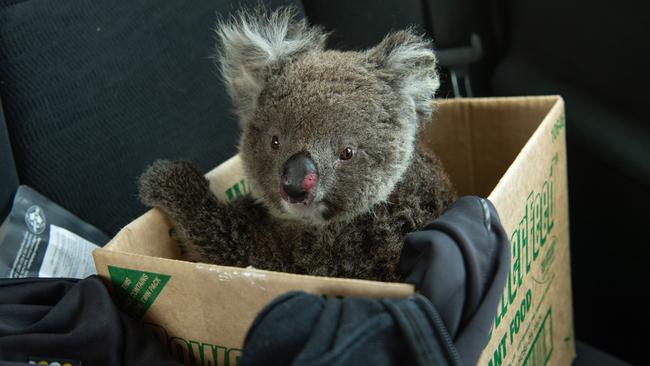
We ferried them to the KI Wildlife Park, where a team of staffers, army reserves and South Australian Veterinary Emergency Management volunteers have created a makeshift triage ward in an inflatable field hospital and are working around the clock to save as many as they can.
The volunteers give each koala a number so they can keep track of their progress, treat burns and blisters and provide food and water to kickstart their recovery.
They are also taking in injured birds, pygmy possums, brushtail possums, kangaroos, wallabies and echidnas, and treating them with varying degrees of success.
There’s three pits out the back for animals that don’t survive, but staff say there’s an 80 per cent survival rate.
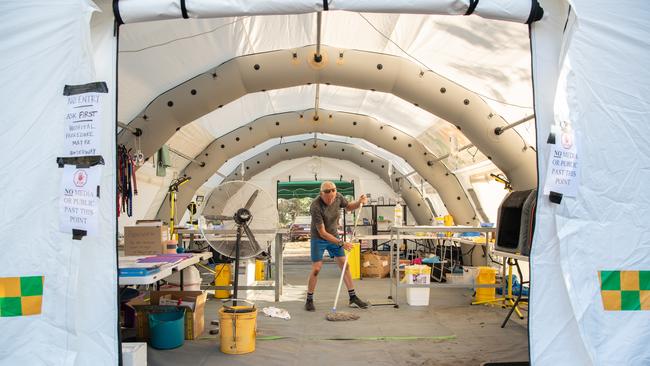
Koalas are territorial animals, so staff take a note of where each patient was found, and plan to only return them to the wild once the area they used to call home has regrown and is again habitable.
Dana Mitchell said the response of people dropping taking time out to save injured or starving koalas had been amazing.
“They’ve been coming in trailers and cars and people are finding them anywhere,” she said. “We’ve had quite a lot coming from one property, who have probably brought in a good 50-odd koalas just from their own property.
“So yeah, it’s been just amazing to see how many people care about these guys to bring them in and try and save as many as we can.”
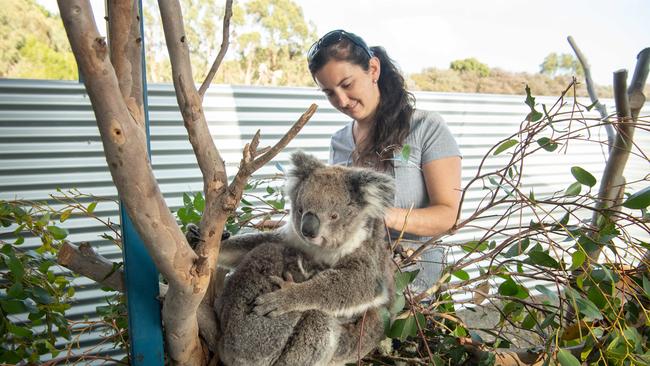
A GoFundMe page the Mitchells started earlier this month has raised more than $2.1 million, despite setting an initial target of just $15,000. People can also help animals left injured or homeless because of the bushfires by donating to savem.org.au.
The RSPCA has warned of another wave of deaths, as survivors of the bushfire suffer starvation.
RSPCA South Australian chief inspector Andrea Lewis said there were massive areas now devoid of greenery. “We are not in the recovery phase, the emerging urgency is saving what is left,” she said.
“Animals which survived the fires are literally dying of starvation. They might not have burn wounds but they are hungry and dehydrated.
“It is pretty devastating when you are standing on a dirt road and for kilometres around there not a green shoot or leaf in sight.”
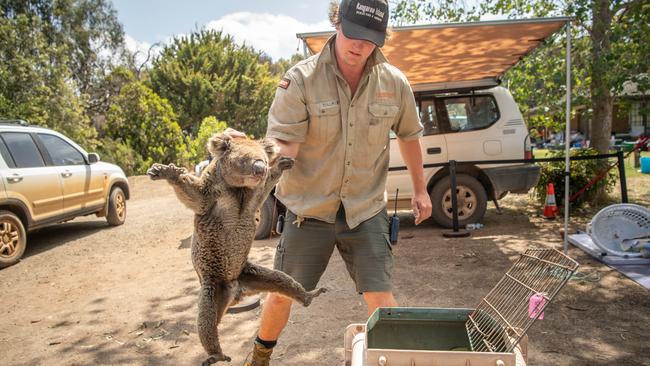
The RSPCA is working with local landowners, setting up feeding and water stations for native animals in an urgent effort to support wildlife whose normal food sources have gone up in smoke.
Ms Lewis said many locals were conservation-minded, but there were vast areas with no people that were completely burnt out.
“I’ve driven hundreds of kilometres and seen mummified koalas, kangaroos, goannas and possums, which is heartbreaking but the issue now is trying to support what is left alive in those burnt-out areas,” she said.
“There are areas where there is no animal life at all, it is like a holocaust of the wildlife, and the urgency now is getting help to those animals left alive and trying to find food.”
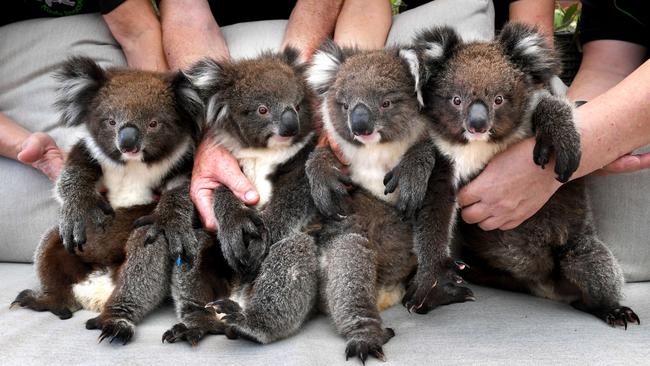
Wildlife rescuers at 1300Koalaz are urging people to plant koala-friendly gumtrees to help the species bounce back.
The Adelaide Hills-based organisation is looking after 32 koalas – four of which have been directly affected by the bushfires.
“There is no real way of telling how many koalas we have left until its over and we look at the figures,” she said.
“It’s going to take a long time and a lot of planning to restart this population.”
Others are being treated for dog attacks, road incidents, illness and the sexually transmitted disease chlamydia.
The care team has been working alongside SAVEM and the CFS throughout the devastation – raising more than $395,000 on GoFundMe together.
All proceeds are going towards the retrieval, treatment and short- and long-term care of injured koalas, 1300Koalaz spokesman Cheryl Zampin said.
South Australians can do their part for the population by planting gumtrees, but the organisation said there are only certain types which agree with the koala population, so research is important.
Distressed koalas put bites on unwary rescuers
Well-meaning animal rescuers on Kangaroo Island are being scratched and bitten by distressed koalas.
A procession of people have needed attention for minor wounds after frightened native animals have fought back against being picked up.
SA Health told The Advertiser: “There have been five presentations to Kangaroo Island Health Service for koala and possum bites and scratches.”
RSPCA chief inspector Andrea Lewis KI said she had seen people with scratches and bite marks.
She stressed koalas are wild animals which would defend themselves if stressed.
“They look cute and cuddly but are all pointy and sharp when they get cranky,” she said.
“Biting is their first reaction when people try to pick them up and hold them like a teddy bear. They will bite anywhere, and their back feet are particularly flexible with very sharp claws for climbing which can really hook into the skin.”
Ms Lewis said koala teeth are more like a rabbit rather than like a dog so a bite tends to be a nip or pinch wound rather than a large tear — but can still be nasty.
She recommended the “burrito” approach.
“If attempting to catch a distressed koala you should be wearing long sleeves made out of tough material like denim and approach the animal from behind so teeth and claws are facing away, using a large towel or blanket,” she said.
“Use the blanket and wrap the koala like a burrito, so the whole animal is in the blanket and it can’t get its feet and claws out.”
ITV News Asia correspondent Debi Edward made headlines when a prankster conned her into wearing protective gear to hold the mythical dangerous “cousin” of the koala, a drop bear – which turned out to be a placid koala from the KI Wildlife Park.
The prank was one of the rare light moment in the bushfire emergency.

